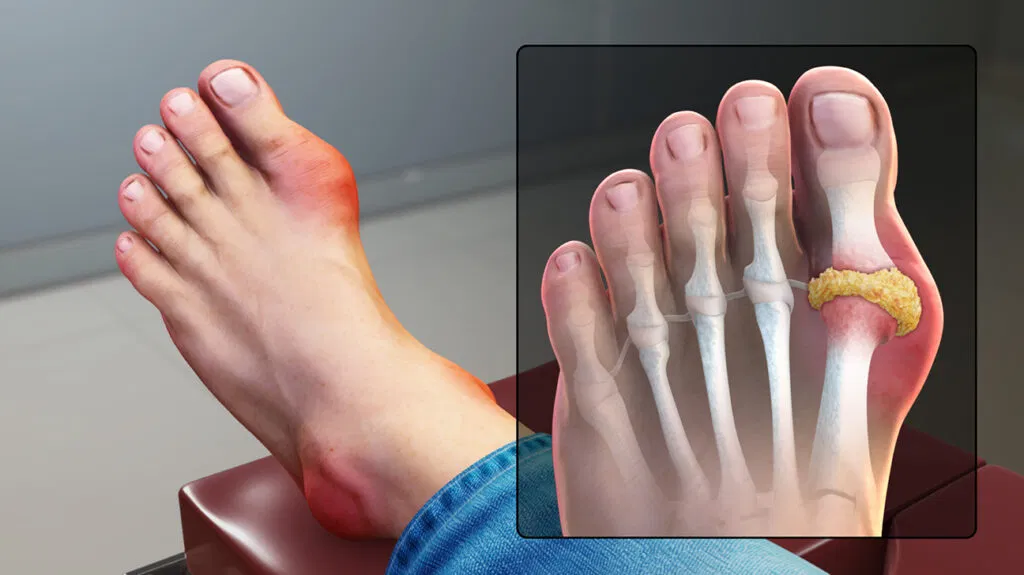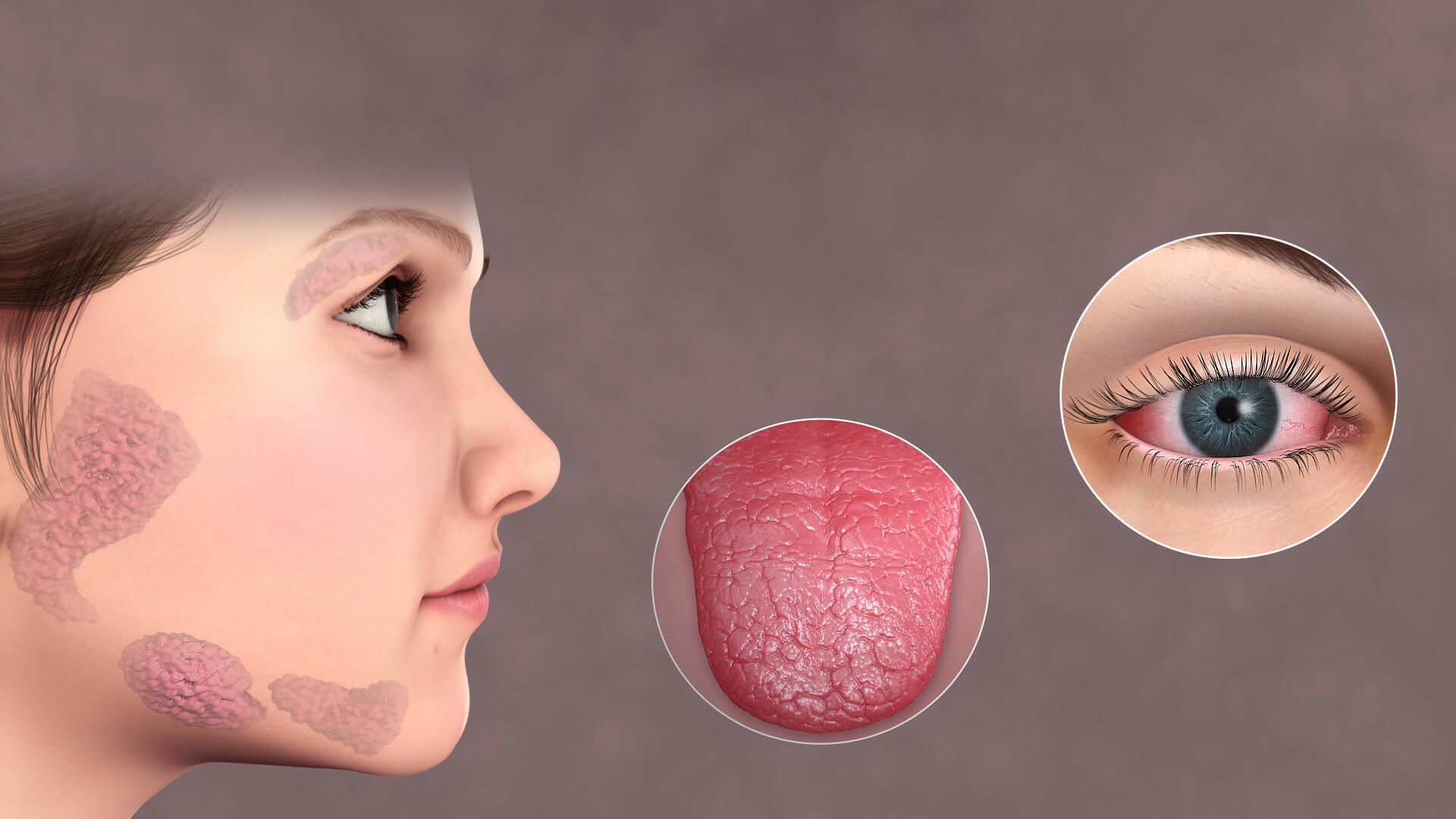Did you know that Gout is the most common inflammatory arthritis in adults in American households today? According to a 2021 Veterans Health Administration (VHA) system data study, Gout is increasingly widespread among patients receiving care .
Gout is typically a joint inflammation with different causes and involves different diagnostic tests and treatments.
Symptoms
Gout being a type of arthritis shows symptoms such as :
- Joint swelling
- Joint pain
- Occasional loss of joint function
Gout symptoms can also include :
- Asymmetry of symptoms such as (pain and swelling that may occur on only one side of the body)
- Pain often, but not always, starts in one of the big toes .
- Tophi (uric acid crystals which create taut bumps around joints)
- Sudden onset of pain (flares), especially at night, with periods of remission.
- Fever
Causes
Gout is caused by hypercupremia, that just means, that there is too much uric acid present in your body. When you have hypercupremia, uric acid crystals can collect in your joints and cause pain, swelling, and other gout symptoms.
Uric acid is produced when Purines, a natural substance found in some foods, are broken down in your body.
Due to this process, a few factors can lead to an increase in uric acid. Usually, kidney issues do rear their head when uric acid is not processed adequately by your kidneys.
Also, diets high in red meat or alcohol can also lead to increased uric acid intake and gout.
Additionally, certain genes and medications (most often diuretics) can and do affect how you process uric acid, which leads to gout.
Diagnosis
Diagnosis of gout typically begins with a visit to your regular health care provider, who may refer you to a rheumatologist, a doctor who specializes in arthritis.
A rheumatologist’s brief is certainly to gather your health history, a list of symptoms, and perform an examination of your joints, looking for swelling or deformity.
Gout can only be correctly diagnosed during a gout flare, when the joints are swollen and painful. Sometimes an experienced rheumatologist can right away diagnose you based on tell-tale symptoms and visual examination alone.
However, diagnostic tests can be useful to differentiate gout from other types of arthritis which we won’t delve into in this piece. Synovial fluid analysis is considered the gold standard for gout diagnosis. Your healthcare provider will use a needle to withdraw the synovial fluid, which is a thick liquid within your joints. Then, they will observe this fluid under a microscope to look for uric acid crystals, which is usually a pointer to gout.
Other tests that may be used to diagnose gout look for joint damage , hyperuricemia , and kidney damage . Some of these tests include :
- X-ray
- Magnetic resonance imaging ( MRI )
- Urinalysis & uric acid blood test
- Ultrasound
- Creatine and urea blood test
Treatment
It is essential you receive a dependable diagnosis for gout.
Why ?
Because if diagnosed at the early stages could mean the difference between saving yourself the agony of joint deformity, or even loss of function in the worst case scenario.
Gout treatment may differ from person to person, but the goal typically is to reduce pain and frequency of gout flares.
Some treatments your healthcare provider may recommend may include :
- Medications
- Dietary modifications and simple how-to tips for adopting a ‘ gout – friendly ‘ diet without shaming people.
Prevention
Genetics alongside other factors outside your control can play a role in getting gout. However, there are some lifestyle changes you can make to keep gout at bay. Bear in mind that making these changes can reduce your chances of developing gout. Just don’t blame yourself if you develop the condition despite your best efforts.
Since gout is a result of hyperuricemia, gout prevention focuses on reducing the uric acid in your body.
You can help prevent gout, or future gout flares by :
- Losing weight
- Making dietary changes
- Limiting alcohol
- Managing stress
Summary
Granted, there are many different causes, diagnostic and treatment options, as well as prevention measures to tackle gout.
One . Thing . Remains . Clear :
Gout can cause terrible joint pain and impact your daily life considerably.
A short story to bring everything into perspective .
As a celebrated composer, Johannes Brahms, who enjoyed his food, was distressed when he became ill and his doctor prescribed a strict diet.
” But this evening I am dining with Strauss and we shall have chicken paprika , ” he protested.
“Out of the question , ” said the doctor,
” Very well , then ,” said Brahms.
” Please consider that I did not come to consult you until tomorrow . ”
If you are suffering from joint pain today, then don’t wait until tomorrow to talk to Piedmont Eastside Rheumatology about a diagnosis and treatment options. It pays to be thorough in describing your symptoms .
It’s especially crucial to visit Piedmont Eastside Rheumatology during a flare to ensure a definitive diagnosis and timely treatment by reputable rheumatologists .
Contact Us :
Piedmont Eastside Rheumatology
2121 Fountain Dr
Suite E
Shellville GA 30078
www.piedmonteastsiderheumatology.com
Telephone : 678-694-8672
Article from PER by Moses Awiti



